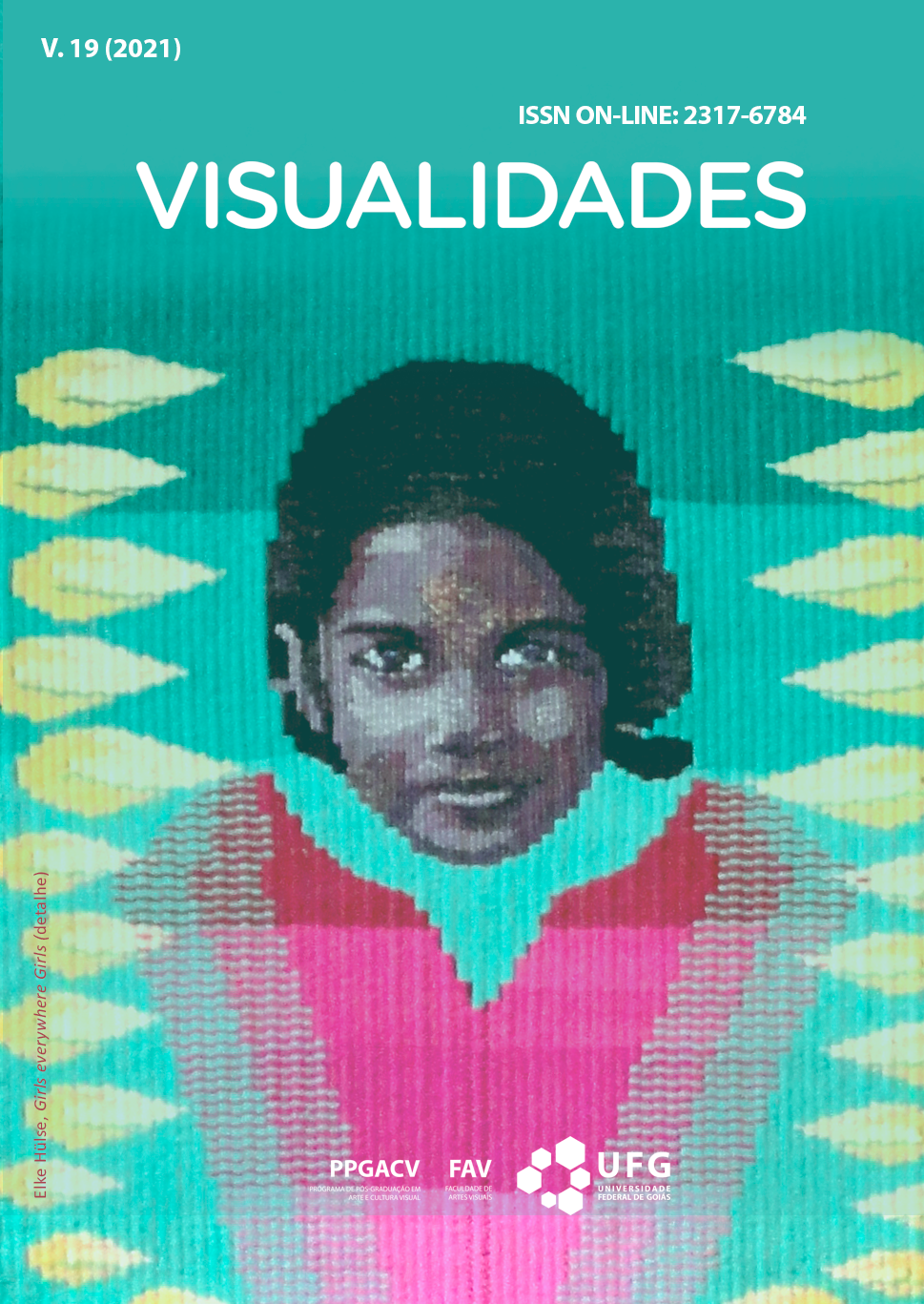The artist as cartographer of oneself: notes on travel report as a legitimating tool
DOI:
https://doi.org/10.5216/v.v19.59379Keywords:
errant artist, map, reportAbstract
This paper tries to explain the concept of "errant artist" in a world that demands a constant production and adaptation to the demands of the art system, and how the artist's report, errant or not, manifests itself as a legitimating tool that marks the artist on the map and facilitates the reading of his work. The article brings some fragments of artists discourses who rehearse a defense of our theory.
Downloads
References
AGAMBEN, Giorgio (2002). Lo que queda de Auschwitz. El archivo y el testigo. Valencia: Pre-Textos.
AGAMBEN, Giorgio (2007). Infancia e historia. Buenos Aires: Adriana Hidalgo.
ANZALDÚA, Gloria (1981). “Speaking In Tongues: A Letter To 3rd World Women Writers”. Em: ANZALDÚA, Gloria; MORAGA, Cherrie (eds.) (1981). This bridge called my back: writings by radical women of color. Nueva York: Kitchen Table: Women of Color Press
ATIENZA, Loreto A. (2009) Una producción cultural distraída, desobediente, en precario e invertebrada: análisis de algunas prácticas artísticas en la actualidad. (Tesis Doctoral). Madrid: Universidad Complutense de Madrid.
BENJAMIN, Walter (1995). Obras escolhidas. Volume II. São Paulo: Brasiliense.
BORRIAUD, Nicolas (2009). Radicante. Buenos Aires: Adriana Hidalgo Editora.
BRAGA, Elen, [correspondência pessoal], Destinatário: Sofia Bauchwitz, Madrid, 2016, e-mail.
DELEUZE, Gilles; GUATTARI, Félix (2004). Mil Mesetas: Capitalismo e esquizofrenia. Valencia: Pre-textos.
DELEUZE, Gilles (1998). “Uma Conversa, O Que é, Para Que Serve?”. Em: DELEUZE, Gilles; PARNET, Claire (1998) Diálogos. São Paulo: Escuta.
FELMAN, Shoshana (1993). What does a woman want? Reading and sexual difference. Londres: Johns Hopkins Press.
FOSTER, Hal (2005). “O artista como etnógrafo”. Em: Revista Marte, n. 1. 2005 (pp. 10-40)
HARVEY, David (2004). “Space as a key Word”. Em: Marx and Philosophy Conference. Londres: Institute of Education. Disponivel em: <http://frontdeskapparatus.com/files/harvey2004.pdf> Acesso em 08.12.2019
JACQUES, Paola Berenstein. Elogio aos errantes. Salvador: EDUFBA, 2012.
KASTRUP, Virgínia; ESCÓSSIA, Liliana da. (2009). “Cartografiar é acompanhar processos”. Em: PASSOS, Eduardo; KASTRUP, Virgínia; ESCÓSSIA, Liliana da. (orgs.) (2009). Pistas do método da cartografia: Pesquisa-intervenção e produção de subjetividade. Porto Alegre: Sulina.
MOMBAÇA, Jota, [correspondência pessoal], Destinatário: Sofia Bauchwitz, Madrid, 2016, e-mail.
OSTROWER, Fayga (1996). Universos da Arte. Rio de Janeiro: Editora Campus .
PARREÑO, José María (2006). Un Arte descontento: arte, compromiso y crítica cultural en el cambio de siglo. Murcia: Centro de Documentación y Estudios Avanzados de Arte Contemporáneo.
PRADO, Adélia (1981). Terra de Santa Cruz. 2ª edição. Rio de Janeiro: Guanabara, 1986.
Rudolf Steiner, The Kingdom of Childhood. Introductory Talks on Waldorf Education Anthroposophic Press, 1995
VELEZ, Ana, [correspondência pessoal], Destinatário: Sofia Bauchwitz, Madrid, 2016, e-mail.
VENTAPANE, Leonardo (2013). “O explorador, o artista e os territórios de impermanência”. Em: Arte & ensaios: revista do ppgav/eba/ufrj, n. 27. Rio de Janeiro: EBA – UFRJ. 2013 (pp.163-171)
Downloads
Published
How to Cite
Issue
Section
License
Copyright (c) 2022 Visualidades

This work is licensed under a Creative Commons Attribution 4.0 International License.

This work is licensed under a Creative Commons Attribution 4.0 International License .
Authors who publish in this journal agree to the following terms:
a. Authors retain the copyright and grant the journal the right of first publication, with the work simultaneously licensed under the Creative Commons Attribution 4.0 License which allows the sharing of work with acknowledgment of authorship and initial publication in this journal.
b. Authors are authorized to take additional contracts separately, for non-exclusive distribution of the version of the work published in this journal (eg publish in institutional repository or as a book chapter), with acknowledgment of authorship and initial publication in this journal.
c. Authors are allowed to publish and distribute their work online (eg in institutional repositories or on their personal page) after the initial publication in this journal, as this can generate productive changes, as well as increase the impact and citation of the published work ( See The Effect of Free Access).
Every effort has been made to identify and credit the rights holders of the published images. If you have rights to any of these images and have not been correctly identified, please contact the Visuals magazine and we will publish the correction in one of the next issues.






